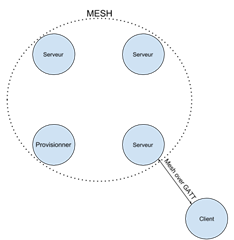Hello, I currently using the proxy light switch exemple of the mesh SDK 2.0.1 in this configuration :
I search to have the less current consumption in the mesh client .

With the Power Profile Kit of nordic I have this result :
With a lot of pic comsuption approximately every 10-30 ms. This measure is take when the Client is connected with a serveur( GATT conection) . (The devices are provisonned, I can light-up the servers leds.)
This is my configuration :
#define MIN_CONN_INTERVAL MSEC_TO_UNITS(250, UNIT_1_25_MS)
#define MAX_CONN_INTERVAL MSEC_TO_UNITS(1000, UNIT_1_25_MS)
(same value for the client and the server)
I don't understand my measure.
I would like to know why the pic isn't every 250ms ( or between 250-100ms). And how I can have less energy comsuption.
Thanks in advance
Axel Collet

